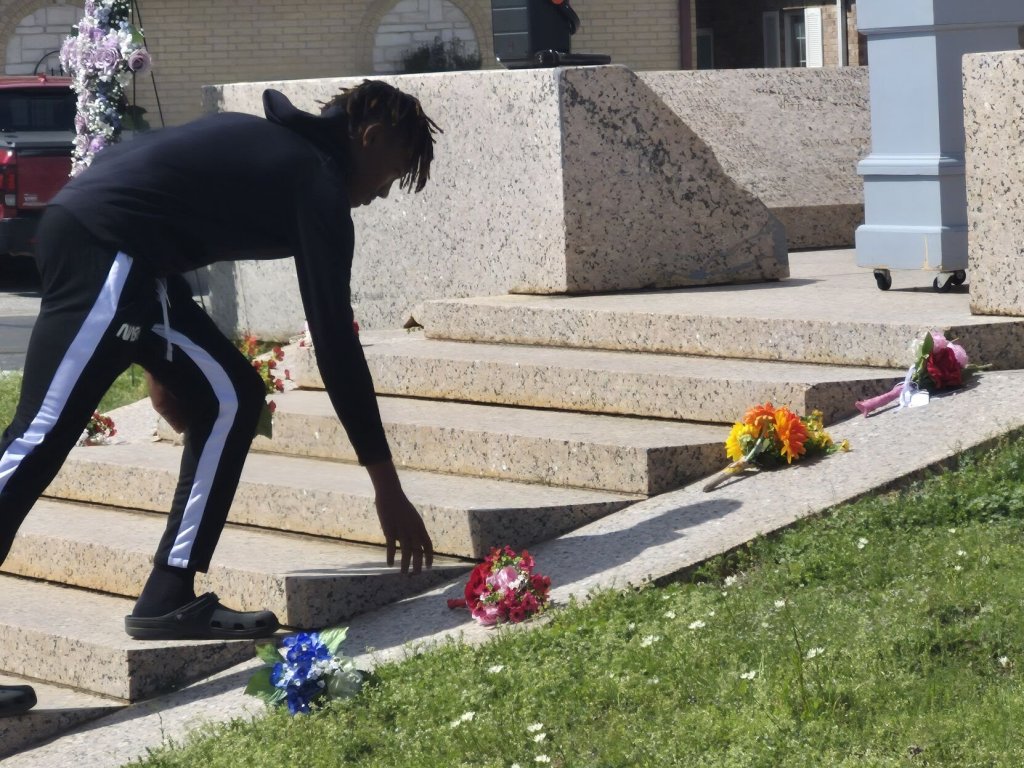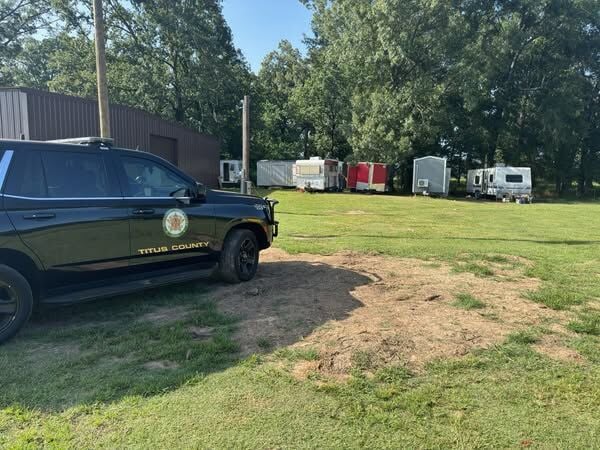New London community marks 88th anniversary of school explosion
Published 5:40 am Wednesday, March 19, 2025

- West Rusk ISD students from grades 5-11 lay flowers at the New London School Explosion Memorial Cenotaph on March 18, 2025, 88 years after the tragedy which killed nearly 300 students and teachers. Students from 5-11th grade were among those lost back in 1937. (Lucas Strough/Kilgore News Herald)
“To remember those that were lost…”
Such is the mission of the West Rusk Alumni Association, along with dozens of others, as they gathered Tuesday at the cenotaph outside West Rusk High School at the remembrance ceremony for the 88th anniversary of the New London school explosion.
Many are descendants of those who survived the tragic events of 1937, and many have members of their family among the 112 victims of the tragedy buried in a local cemetery.
West Rusk Alumni Association member Danny Dorsey welcomed all to the event and invited them to pay their respects to the memory of the victims lost in the catastrophe.
Pastor Lori Burns of New London Methodist Church gave a blessing and invocation, leading the group in prayer as they stood beside a field of white crosses, signifying each of the nearly 300 students and teachers who lost their lives.
Pastor Pete Thompson of Pleasant Hill Missionary Baptist Church spoke to the crowd, explaining how when he first came to the community, he soon learned that every local he met had a personal connection to the tragedy.
The pastor described the events of the fateful day:
At 3:17 p.m. on May 18, 1937, a spark in the metal shop of the London ignited natural gas fumes, which had permeated the school building, causing a massive explosion which destroyed the building with hundreds of schoolchildren, faculty and staff still inside.
At the time, the London School was state-of-the-art and entirely modern, heated with natural gas, which the local oil industry created in excess as a byproduct. It was that gas which leaked in March 1937, slowly and silently filling an area beneath the school before being ignited.
Those in the crowd gasped as Thompson repeated the words of witnesses to the tragedy: how the whole school building, tons of concrete and steel, seemed to lift entirely off the ground before crashing back down and how huge chunks of the building were propelled hundreds of feet from the site, smashing cars parked nearby.
Pastor Thompson recounted one of many grim facts about the tragedy and its aftermath: at the time, a young reporter named Walter Cronkite would head to New London to cover the disaster on the ground as his first major news story.
Years later, looking back on his storied journalism career which included coverage of presidential assassinations, the Vietnam War and international catastrophes, Cronkite observed:
“I did nothing in my studies nor in my life to prepare me for a story of the magnitude of that New London tragedy, nor has any story since that awful day equaled it.”
Today, the London Museum and Cafe carries on the history of that painful day, to ensure that those who died are never forgotten and that those who live on have a place to mourn. The museum includes various exhibits and memorabilia, as well as a diorama of the original London school building.
For more information, visit http://nlsd.net/.






